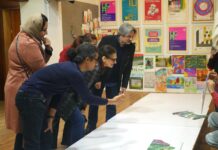Almost every individual reading this letter has used a plastic bottle, bag, or box within the last 24 hours. Plastics have become a cornerstone of modern convenience and lifestyle in recent times. Several recent investigations have highlighted the catastrophic worldwide crisis caused by the use of plastic. Two facts stand out right away. One is that mankind buys a million tonnes of plastic each minute. The second point is that only 91 percent of all plastic is recycled.
The COVID-19 pandemic has damaged efforts to reduce plastic pollution, with the disposal of discarded PPE kits, gloves, masks, sanitiser dispensers, and other items creating a “plastic pollution pandemic” scenario. Plastic trash is a global problem that is getting worse and worse every day.
Nearly 70% of the country’s plastic garbage (2.6 million tonnes) is mishandled, with the majority of it ending up in landfills, mismanaged dumps, or littered throughout the country’s land and water bodies. This growth is the outcome of a disposable-goods system that mixes short-term convenience with long-term environmental damage. Banning plastic bags alone will not suffice to eliminate plastic pollution. Innovative solutions are required to prevent and alleviate plastic waste and pollution. Reusing 10% of plastic waste will prevent nearly half of it from entering the ocean.
An innovative solution to plastic waste disposal and recycling has been discovered after conducting research into the suitability of various plastic waste materials such as polythene, polypropylene (PP), polyethene terephthalate (PET), high-density polythene (HDPE), low-density polythene (LDPE), and polyvinyl chloride (PVC). My version of innovation is based on the same concept. The idea is to make plastic waste bricks, tiles, roof pavements, and construction blocks for use in the construction of roads, sidewalks, roofs, and buildings.
The manufacturing of these recycled material tiles is both straightforward and creative. The first step after receiving the raw material is to wash it before placing it in a shredder to shred the plastic. The shredding facilitates and speeds up the melting of the plastic. The shredded plastic is then blended with the desired ratio of sand and colourants in a mixer. The sand and plastic are well mixed before being introduced to the melting process. The melting device creates a mixture like the one that resembles traditional bricks and tiles but is made primarily of sand and recyclable plastic waste instead. Blobs of this mixture are then shaped in a hydraulic press or mould to the desired form, size, and pattern. When the final product has cooled, it is ready to use.
This product will be beneficial in the making of a variety of construction materials that are less expensive than conventional ones. The tiles that are created in this manner are set quickly and are highly durable. Depending on the mould, you can make the floor or paving tiles, as well as wall bricks. They’re also good rainwater harvesters because they’re non-absorbent, which means they’re less likely to collect dew, algae, or fungus and give pure water. The insulation provided by these tiles and bricks is excellent, keeping one warm in the winter and cool in the summer. The sand in the tiles acts as a fire extinguisher.
The objective of this product development is to create a low-cost, long-lasting construction solution. This product is manufactured from waste plastics that have no recycling value. This could aid Pakistan in dealing with trash management concerns such as those currently plaguing Karachi. We don’t have many garbage dump locations in Pakistan. Normally, only around 20% of waste is recycled, and the rest is either burned to pollute the air or found in garbage piles along the roadside. It has the potential to provide, clean up the environment, develop new construction materials, and drastically reduce the amount of trash LDPE entering the oceans by converting waste plastics into a useful resource.
Not only that, but industries that work on this product will also help with the unemployment problem. A recycling and reusing approach would reduce humanity’s ecological footprint while simultaneously generating profitable new sources of economic value. Companies, government agencies, and non-governmental organizations (NGOs) should promptly explore these situations and make concrete efforts to realize the business potential they present.
AMNA ZUBAIR
LAHORE






















